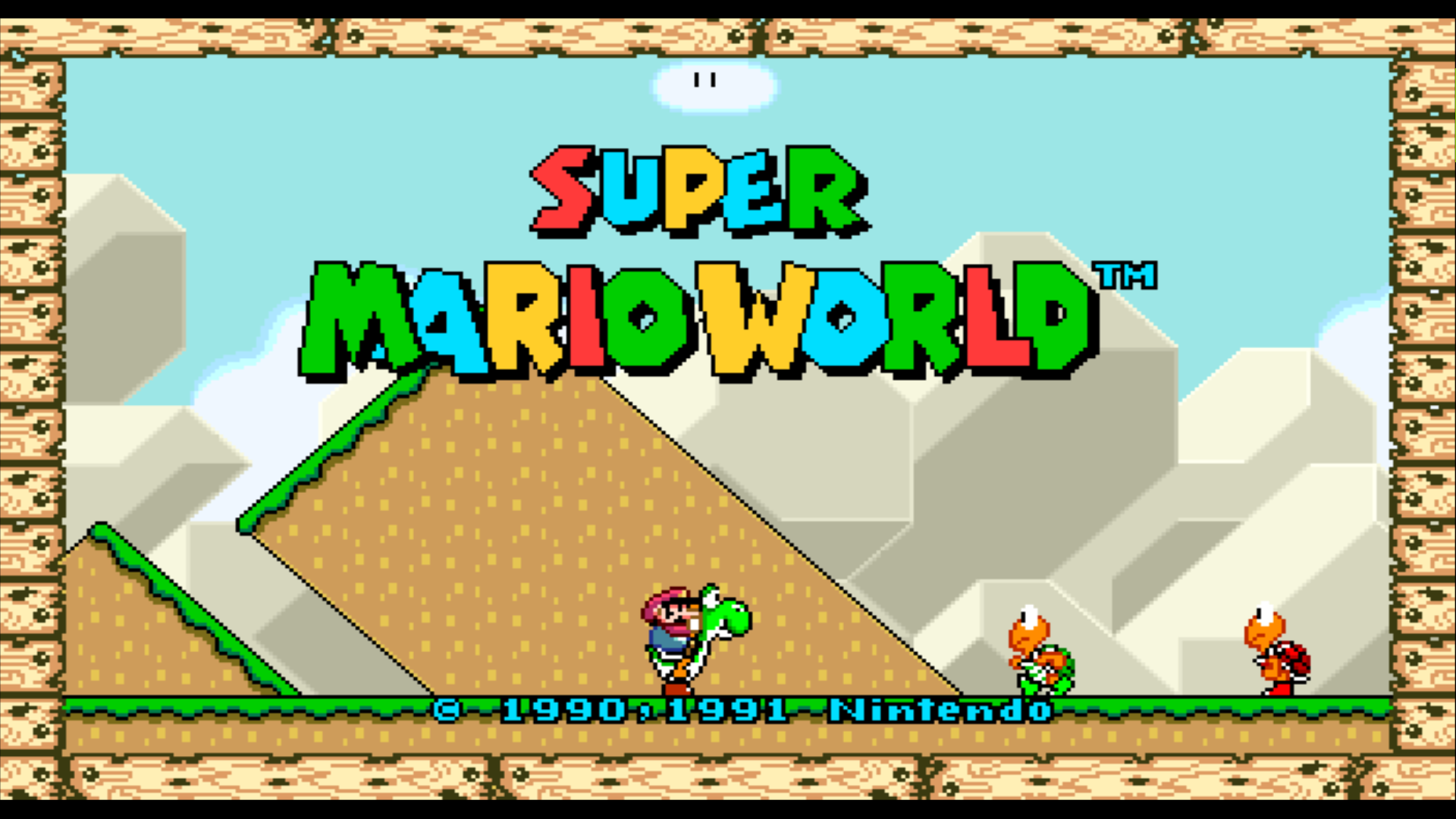
Alright, let’s start here: I enjoyed Super Mario World. I wasn’t very good at it, of course, but I enjoyed it.
And apparently so have millions of other people who have played it for years after its creation! Although there have been dozens of Mario games created since Super Mario World was released thirty years ago, it still endures as one of the most popular Mario titles. I’m no expert in Mario games, but it surprised me to learn that a game that old is still commonly considered to be the best when so many other games have tried to take its place. So, what is it about Super Mario World that’s so unique? Why is it still the best?
Well, from an uncritical level, it’s just fun. As with many Mario games, the game feels almost rhythmic when played well. Perfecting a sequence of jumps and moves to get a certain reward is incredibly satisfying. But in many Mario games, there are a limited number of challenges placed in front of the player. Eventually, the rhythm of careful jumping risks settling into boredom. Super Mario World has a variety of ways to prevent that, keeping the player engaged by literally changing the game.
For one thing, Super Mario World occasionally introduces new power-ups such as Yoshi and the Fire Flower. However, most of those upgrades come early in the game, and there aren’t that many of them (at least in my admittedly incomplete experience). Instead, what’s new in later levels is the mechanics of those upgrades. For example, Yoshi starts off simply as a mount for Mario, offering him a bit of speed and protection from being hit by an enemy. However, the game allows Yoshi to eat various objects, such as enemies and fruit. Instead of explicitly explaining this to the player, the game allows the player to discover this for themselves by placing fruit near Yoshi’s early spawning locations. Many other power-ups can be combined in unique and interesting ways with other game elements and mechanics, as well as with levels that are designed to encourage specific usages of power-ups. This means that the player slowly uncovers new tricks that they technically always had access to throughout the game, which I found to be more engaging than simply having a new shiny power-up dropped in front of me any time a level got hard.
Super Mario World also allows interactivity between different levels. Beating certain levels lets players flick colored switches, which permanently fills in boxes in other levels across the game world, often making those levels notably less stressful by providing the player with more blocks to jump or fall onto. Allowing completion of separate levels to affect each other undermines some of the purism of platformer difficulty and linearity, and I think that makes Super Mario World both more accessible and more enjoyable. It isn’t the only Mario game to do this, of course. Many Mario games sport non-linear world maps and side areas that provide the player with coins, power-ups, or easier paths through later levels. However, I think the switch and block mechanic of Super Mario World is elegant in its simplicity, and it is balanced just right for accessibility. Most of the filled-in blocks in the levels I played didn’t make it easier to progress through the level. Instead, they provided cushions when I fell, stopping me from losing lives and making the game more forgiving of my mistakes. I still had to move forward on my own, but the game acknowledge that it might take me a few tries and that was ok. I really enjoyed this kind of support because I felt like the game was helping me cope with my lack of dexterity while still retaining its initial challenge, allowing me to feel proud of my success when I beat harder levels.
Overall, I think Super Mario World is enduringly popular not because it brings some totally new elements to the table that no other Mario game has. Instead, it takes some of the best elements of Mario games – those made both before and after its release – and finds a way to keep them simple and enjoyable without undermining the core game experience. This makes for a game that is streamlined and multilayered at the same time, and one that I found a lot of fun in discovering.
Image Crdit: https://www.reviewgeek.com/89416/try-out-super-mario-world-in-widescreen-while-you-still-can/
